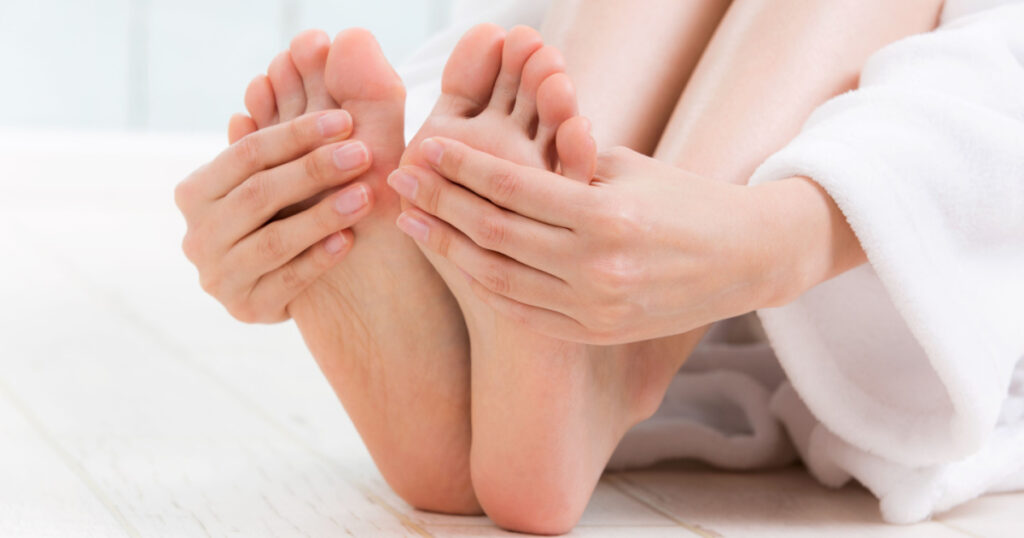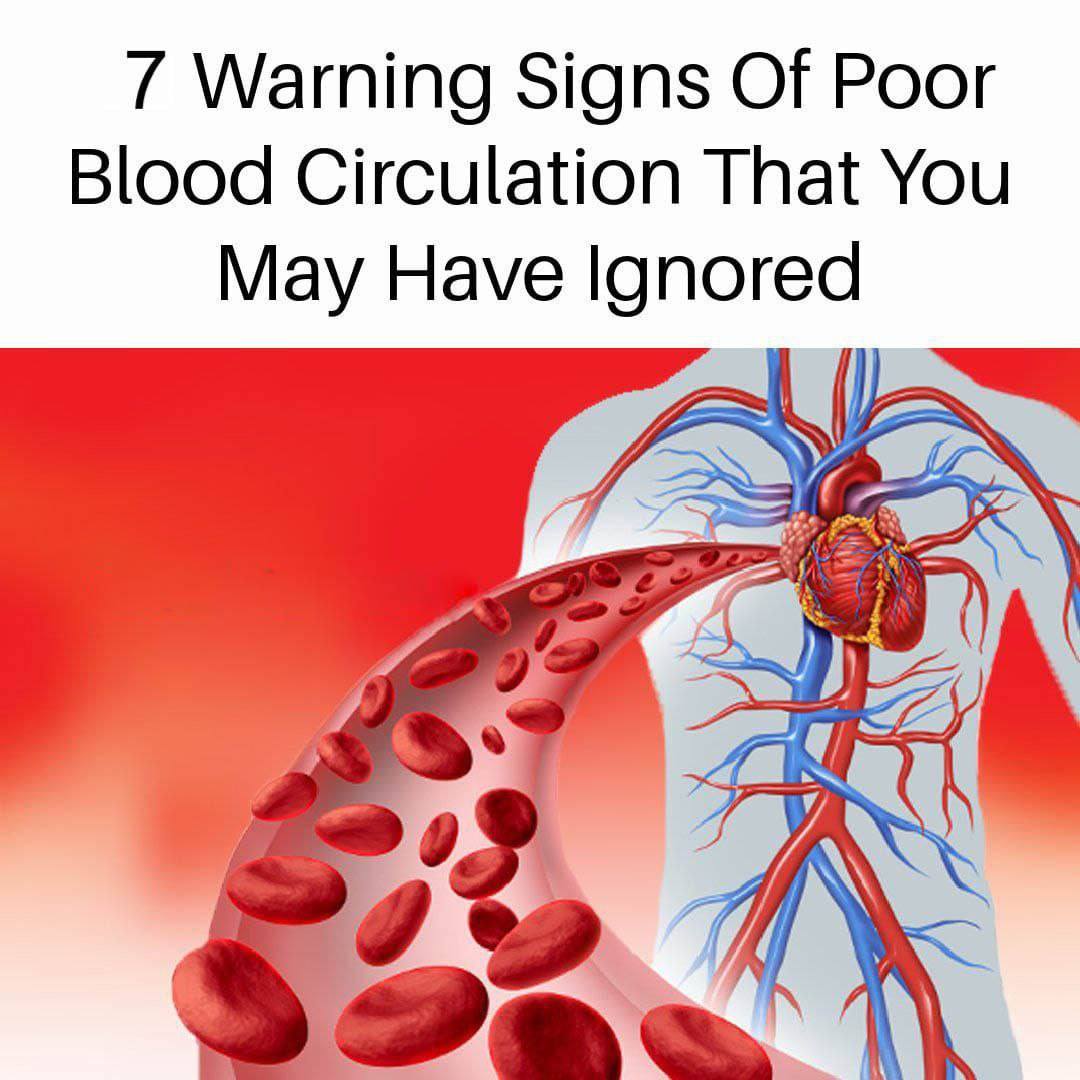Signs of Poor Circulation
Poor circulation occurs when there is a decreased flow of blood to certain areas of the body. This can result in various symptoms that indicate a compromised circulatory system. Here are some common signs of poor circulation (1, 2):
1. Cold hands and feet

If you frequently have cold extremities, it could be a sign of poor circulation. Insufficient blood flow can make your hands and feet feel colder than the rest of your body. When you have poor circulation to your fingers and toes, they can often appear a blue-tinged color. This is because the lack of blood flow causes them to lose oxygen, which results in their turning a bluish hue. It’s also common for people with poor circulation to have cold hands and feet throughout the year—not just during winter months.
2. Numbness or tingling

Numbness and tingling sensations may indicate poor circulation, especially in the hands, feet, or limbs. It occurs when the nerves do not receive an adequate blood supply. This can lead to a lack of sensation, which can cause you to injure yourself without realizing it. For example, if the blood flow to your hands is poor and you touch something hot, it may feel cool—even though it’s actually extremely hot.

